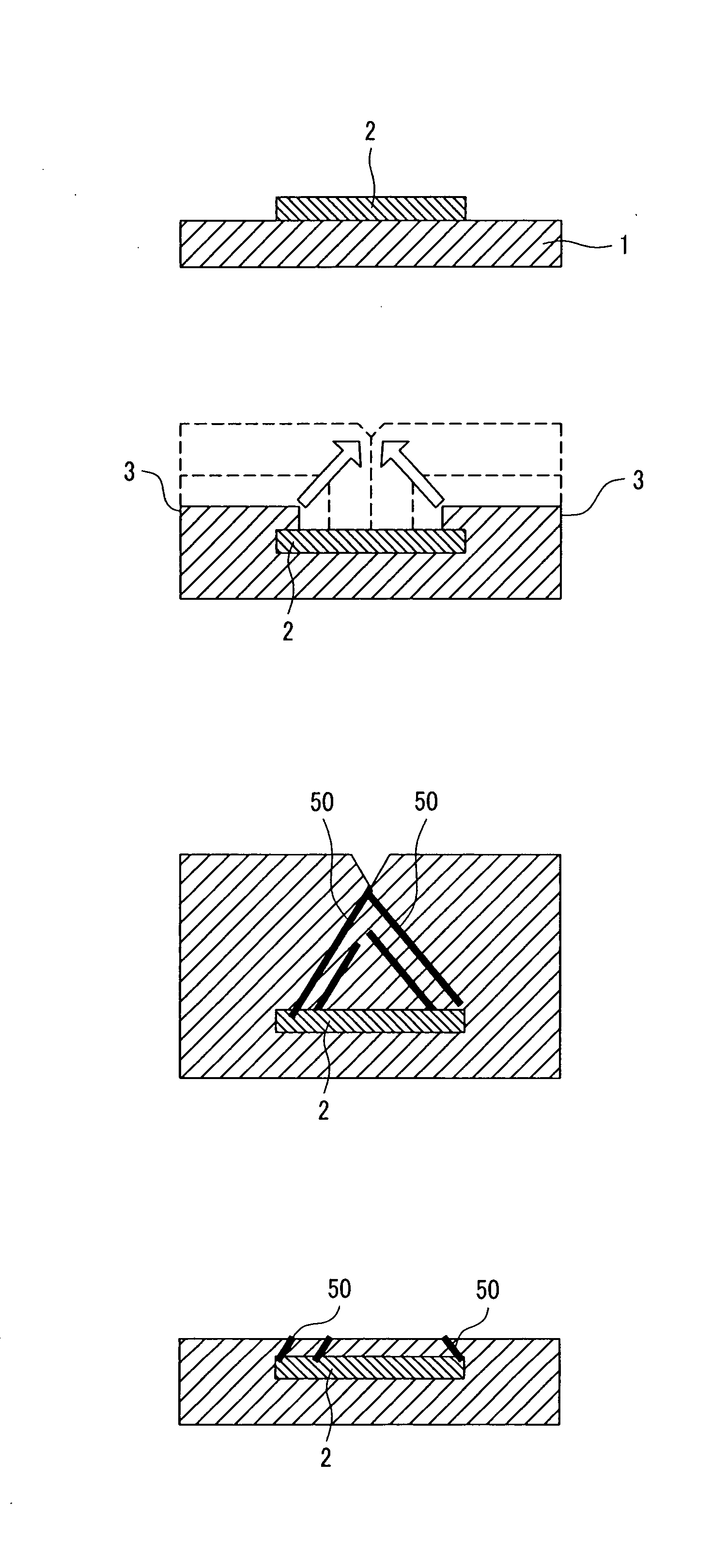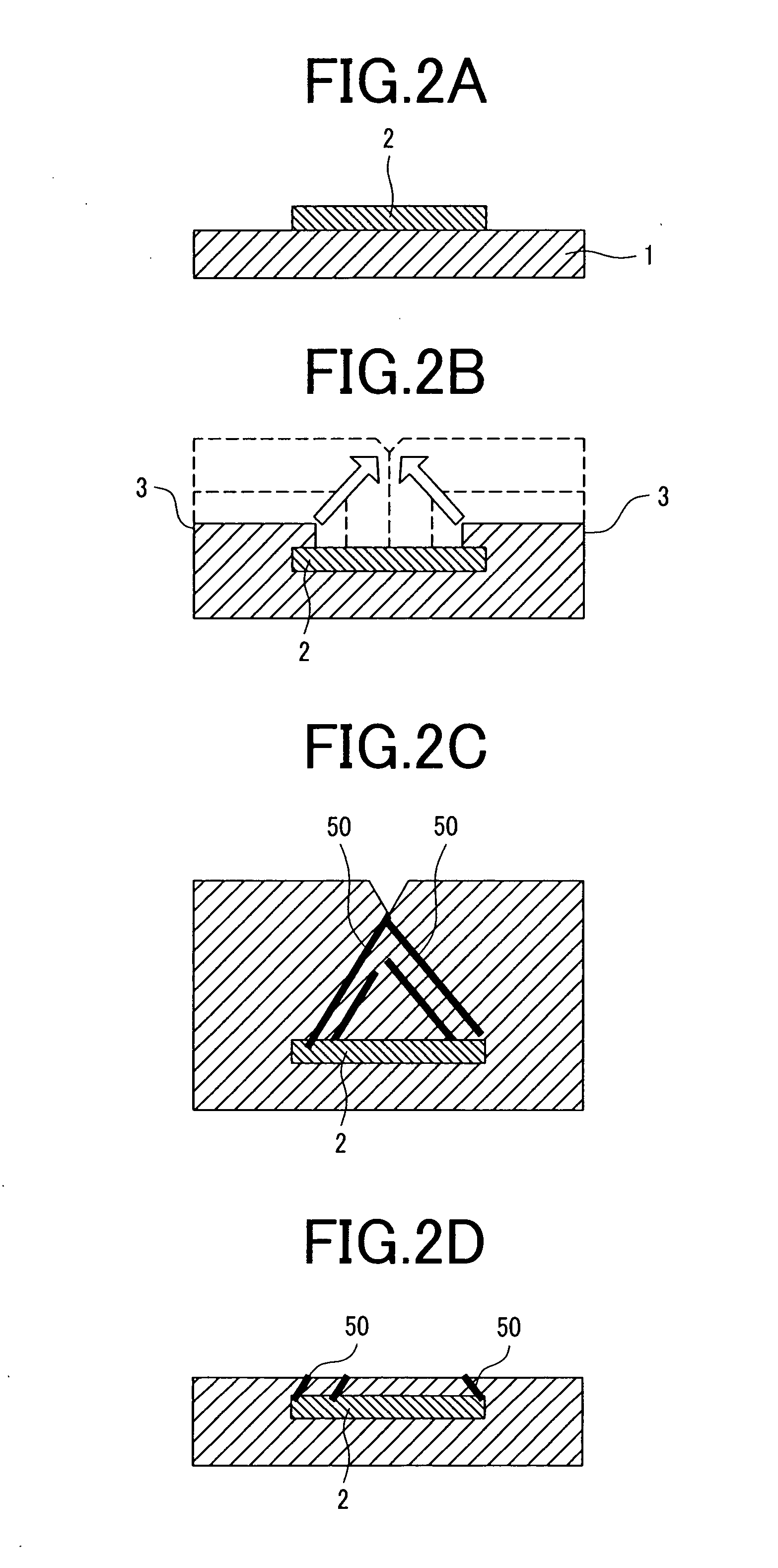Manufacturing method of semiconductor device
a manufacturing method and semiconductor technology, applied in the direction of single crystal growth, polycrystalline material growth, chemistry apparatus and processes, etc., can solve the problems of high substrate cost, high substrate cost, and high manufacturing cost of lsis made using soi substrates, and achieve low cost, high film thickness controllability, and high crystal quality.
- Summary
- Abstract
- Description
- Claims
- Application Information
AI Technical Summary
Benefits of technology
Problems solved by technology
Method used
Image
Examples
first embodiment
[0050]FIGS. 1A through 1F are views illustrating steps for manufacturing an SOI structure according to a first embodiment of the present invention. For the sake of convenience, the conductivity type of semiconductor substrates and semiconductor films is fixed; however, specific conductivity types may be combined in any arbitrary ways and are not limited to those described in the embodiments.
[0051] A silicon oxide film 2 having a thickness, for example, of 10 nm is formed as an embedded oxide film layer on a semiconductor substrate 1 including a 20-cm-diameter single-crystal Si having a plain orientation (100), P-type conductivity, and a resistivity of 10 ohm.cm and having a main surface subjected to mirror polishing. Photoresist is subsequently applied and the silicon oxide film on a region on which the SOI structure is not to be formed is selectively removed (FIG. 1A). Selective epitaxial growth of Si is then performed in two stages. It is commonly known that, in the selective epi...
second embodiment
[0053] A semiconductor device according to a second embodiment of the present invention will be described below with reference to FIGS. 5A through 5G. A silicon oxide film 2 having a thickness, for example, of 10 nm is formed as an embedded oxide film layer (FIG. 5A) on a semiconductor substrate 1 including a 20-cm-diameter single-crystal Si having a plain orientation (100), P-type conductivity, and a resistivity of 10 ohm.cm and having a main surface subjected to mirror polishing. Photoresist is subsequently applied and the silicon oxide film on a region on which the SOI structure is not to be formed is selectively removed (FIG. 5B). Selective epitaxial growth of Si is then performed at a relatively low temperature region. It is commonly known that, in the selective epitaxial growth of Si, introducing the HCl gas during the growth process enhances selectivity on Si and the oxide film.
[0054] The introduction of the HCl gas, however, promotes etching of the silicon oxide film also. ...
third embodiment
[0057] A semiconductor device according to a third embodiment of the present invention will be described below with reference to FIGS. 6A through 6D. Photoresist is applied to a semiconductor substrate 1 including a 20-cm-diameter single-crystal Si having a plain orientation (100), P-type conductivity, and a resistivity of 10 ohm.cm and having a main surface subjected to mirror polishing. The single-crystal Si is then selectively etched (FIG. 6A). A silicon oxide film 4 is subsequently formed to form an embedded oxide film layer. At this time, controlling the film thickness of the silicon oxide film 4 allows the embedded oxide film layer with a desired film thickness to be formed. Thereafter, hydrogen annealing at a high temperature of, for example, 1050° C., is performed to etch Si. As noted earlier, etching progresses from a peripheral portion for a patterned silicon oxide film. By making use of this characteristic, it is possible to etch the silicon oxide film only on edge portio...
PUM
| Property | Measurement | Unit |
|---|---|---|
| thickness | aaaaa | aaaaa |
| threshold voltage | aaaaa | aaaaa |
| threshold voltage | aaaaa | aaaaa |
Abstract
Description
Claims
Application Information
 Login to View More
Login to View More - R&D
- Intellectual Property
- Life Sciences
- Materials
- Tech Scout
- Unparalleled Data Quality
- Higher Quality Content
- 60% Fewer Hallucinations
Browse by: Latest US Patents, China's latest patents, Technical Efficacy Thesaurus, Application Domain, Technology Topic, Popular Technical Reports.
© 2025 PatSnap. All rights reserved.Legal|Privacy policy|Modern Slavery Act Transparency Statement|Sitemap|About US| Contact US: help@patsnap.com



